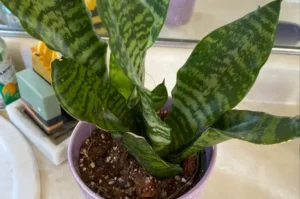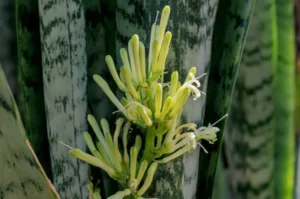Snake plants, also called Sansevieria or Dracaena trifasciata, are among the most resilient indoor plants, famous for their upright leaves and minimal care requirements. However, a common question among plant lovers is whether snake plants have deep roots.
In this article, we’ll take a closer look at the root system of the snake plant, how deep the roots typically grow, and how to care for them properly.
Overview of Snake Plant Roots
No, snake plants do not have deep roots. Their roots are shallow and designed to spread horizontally rather than down into the soil.
Snake plants grow from thick underground stems known as rhizomes. From these rhizomes, fine roots spread into the surrounding soil. Rather than growing deep, these roots prefer to expand outwards, forming a shallow yet strong root structure.
Why Snake Plants Have Shallow Roots
There are several reasons why snake plants grow this way. Understanding their natural behavior helps you provide the best care.
1. Adaptation to Dry Environments
Snake plants come from dry, rocky areas in Africa, where rain is rare. Their roots have adapted to absorb water quickly from the top layers of soil, where moisture is most available. That’s why their root systems are naturally shallow.
2. Rhizome Growth Style
Instead of growing downward, the rhizomes branch out just beneath the surface. As they grow, they produce roots and new shoots, allowing the plant to spread and multiply easily.
3. Container Limitations
Most people grow snake plants in pots. Shallow containers naturally limit how deep the roots can grow. But since the plant doesn’t need deep roots, this setup works well.
How Deep Do Snake Plant Roots Grow?
In most cases, the roots of a snake plant only reach a depth of 6 to 12 inches. Even in larger pots or garden beds, the roots don’t go much deeper than this. Instead, they spread out to anchor the plant and absorb water from a broad surface area.
Recognizing Healthy and Unhealthy Roots
Healthy roots are the foundation of a thriving snake plant. Here’s how to tell if your plant’s roots are in good shape:
Healthy Roots:
- Light-colored (white or yellowish)
- Firm to the touch
- Evenly spread through the soil
Unhealthy Roots:
- Soft, mushy, or blackened
- Foul-smelling (a sign of root rot)
- Overcrowded or circling the pot
If your snake plant shows signs of root problems, it may be time to repot or adjust your watering habits.
Best Pots for Shallow-Rooted Snake Plants
Since snake plants don’t require deep soil, the type of pot you choose matters. Look for containers that are:
- Wide and shallow: To match the natural spread of the roots.
- Well-draining: Drainage holes are essential to prevent excess moisture.
- Sturdy: The roots can expand enough to crack weak pots over time.
Terracotta pots are a popular choice because they allow moisture to escape, reducing the risk of soggy soil.
Tips to Support Healthy Root Growth
Keeping your snake plant’s roots in good condition is easy if you follow a few basic steps:
- Use Proper Soil: A gritty, well-draining soil mix is best — think cactus or succulent soil.
- Water Wisely: Let the top few inches of soil dry before watering again. Overwatering is the biggest cause of root rot.
- Don’t Oversize the Pot: Bigger isn’t always better. Use a pot just slightly larger than the root ball.
- Repot Every Few Years: When roots become cramped or start pushing through drainage holes, it’s time to repot.
- Provide Enough Light: Bright, indirect sunlight encourages strong, healthy growth.
Final Thoughts
To sum it up, snake plants do not grow deep roots. Their root systems are shallow, spreading outward rather than downward. This shallow growth works in their favor, allowing them to thrive in tight pots and low-maintenance conditions.
By understanding how their roots grow and giving them the right care, from soil and pot choice to watering habits, your snake plant can stay healthy and beautiful for years to come






